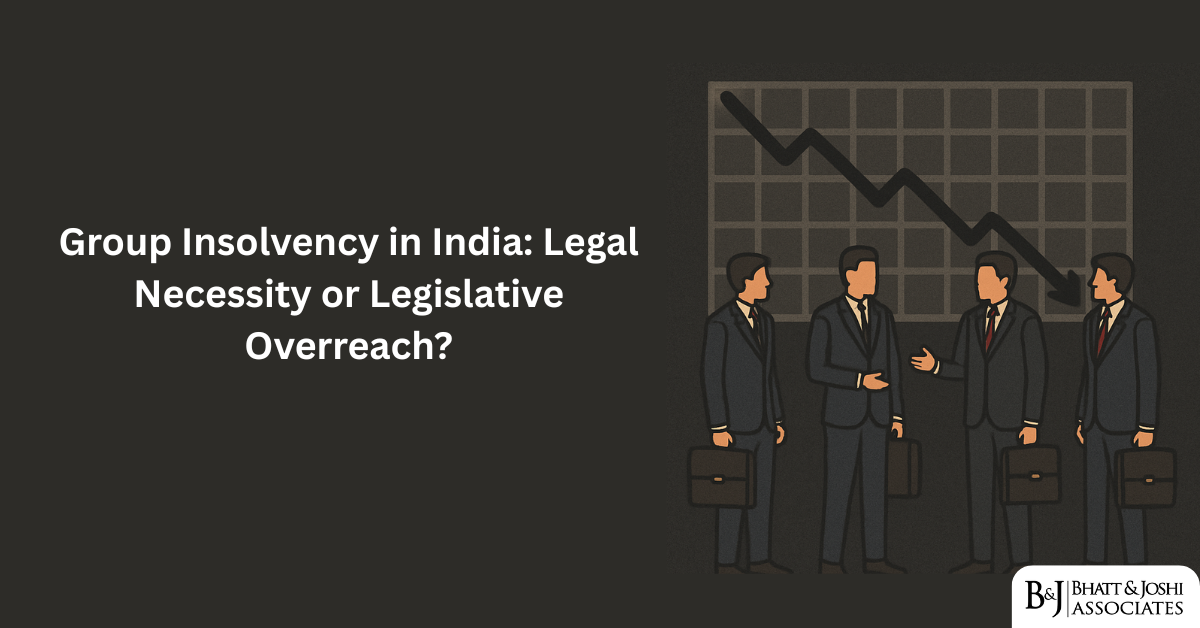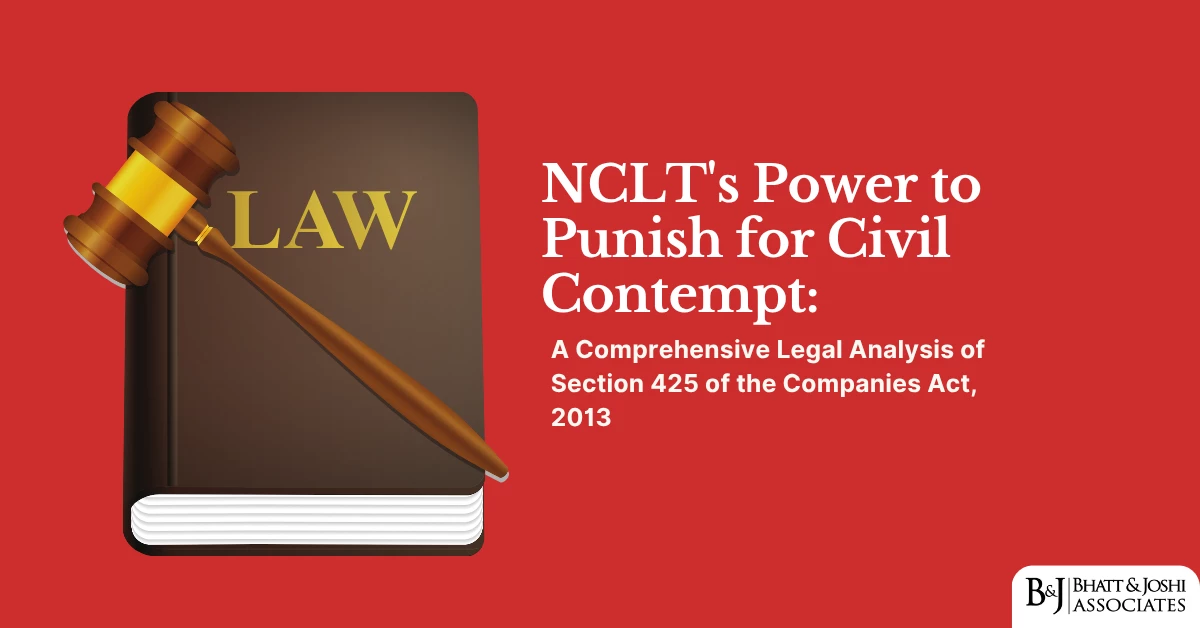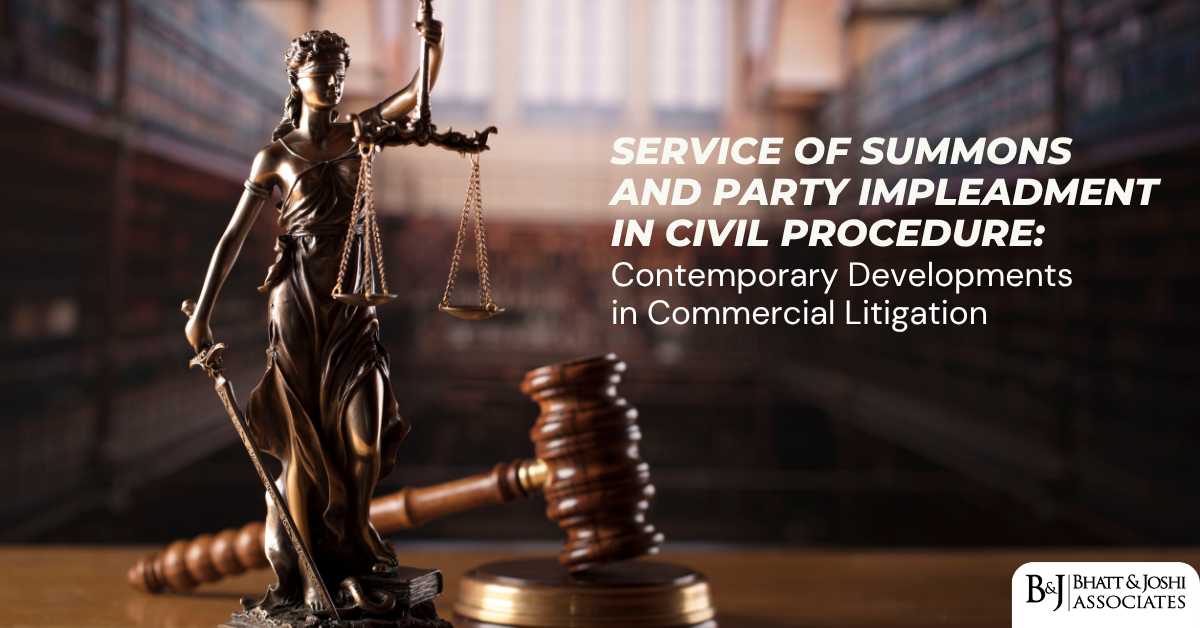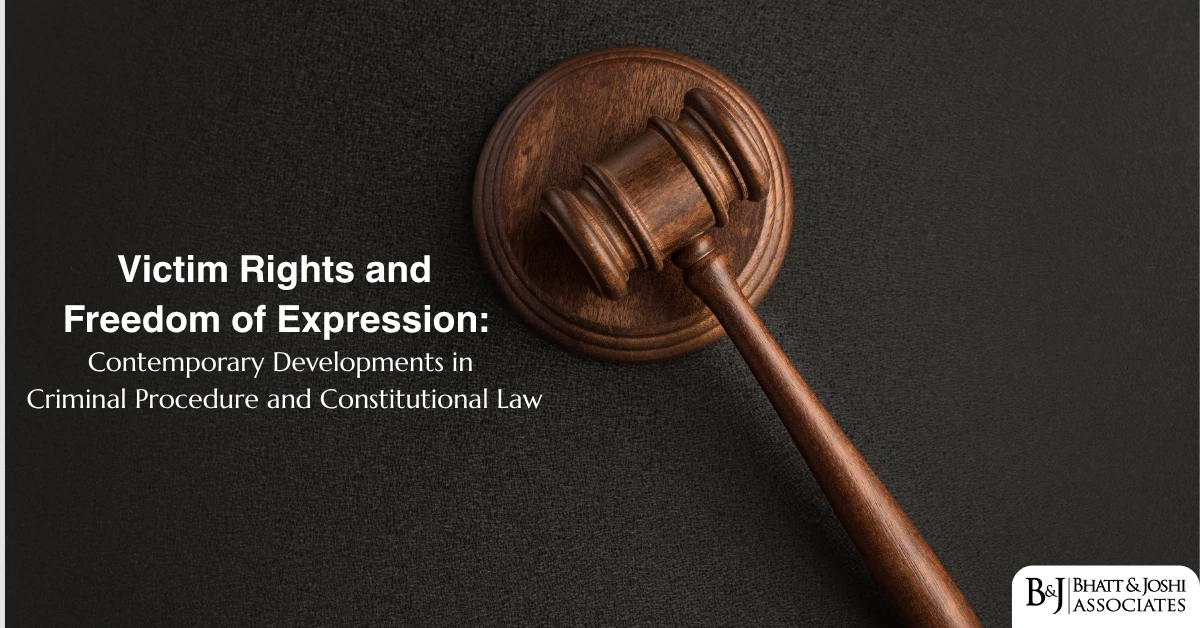
Introduction
The insolvency of corporate groups—constellations of legally distinct entities functioning as integrated economic units—presents distinctive challenges that test the boundaries of traditional entity-based insolvency frameworks. India’s Insolvency and Bankruptcy Code, 2016 (IBC), while transformative in its approach to individual corporate insolvency, adheres to the fundamental principle of separate legal personality, addressing each entity’s insolvency in isolation despite potential interconnections within corporate groups. This entity-centric approach has created significant practical challenges in resolving the insolvency of complex corporate structures, where isolated entity-level proceedings may fragment business value, complicate coordinated resolution, and enable strategic behaviors that potentially undermine creditor interests. The absence of a comprehensive group insolvency framework has compelled courts to develop case-specific solutions through innovative interpretations of existing provisions. These judicial interventions, while addressing immediate concerns, have created a patchwork jurisprudence lacking the coherence and predictability essential for effective insolvency administration. Simultaneously, the Insolvency Law Committee has recognized these challenges, recommending a phased implementation of group insolvency mechanisms through its 2019 report. As legislative deliberation continues, the fundamental question emerges: does implementing a comprehensive group insolvency framework in India represent a necessary evolution of India’s insolvency regime, or would it constitute legislative overreach that compromises foundational principles of corporate law? This article examines the evolving jurisprudence on group insolvency in India, analyzing landmark judicial decisions, evaluating proposed legislative frameworks, assessing international approaches, and examining the tension between entity separateness and economic integration in modern corporate structures. Through this analysis, the article aims to provide clarity on whether a distinct group insolvency framework in India represents legal necessity or unwarranted legislative expansion in India’s evolving insolvency ecosystem.
The Current Statutory Framework: Entity-Centric Approach and Limitations
Separate Legal Personality: The Foundational Doctrine
The IBC, in its current form, does not contain specific provisions addressing group insolvency scenarios in India. This omission reflects the legislation’s adherence to the foundational company law doctrine of separate legal personality, which treats each company as a distinct legal entity regardless of common ownership, control, or operational integration. This principle, established in the seminal case of Salomon v. Salomon & Co. Ltd. [1896] UKHL 1 and consistently upheld in Indian jurisprudence, forms the bedrock of corporate law globally.
In Vodafone International Holdings BV v. Union of India (2012) 6 SCC 613, the Supreme Court reaffirmed the sanctity of this principle in the Indian context, observing:
“The separate legal personality of companies enables entrepreneurs to separate their business functions into different corporate entities within a corporate group. This often creates genuine legal relationships by a complex web of transactions with real legal, taxation, and business effects. The doctrine of separate legal personality has served the commercial world well, enabling fragmentation of businesses into separate corporate entities for legitimate business purposes.”
This doctrinal foundation manifests in the IBC’s entity-centric insolvency approach, where each company’s insolvency is addressed in isolation, without specific mechanisms for coordinated proceedings involving related entities.
Existing Provisions with Limited Group Applicability
While lacking a comprehensive group framework, certain IBC provisions offer limited applicability to group scenarios:
- Section 60(3): Enables the NCLT to transfer proceedings involving a corporate debtor’s guarantors or other related parties to itself, potentially facilitating limited procedural coordination.
- Section 18(f): Requires resolution professionals to take control of assets owned by the corporate debtor but held by third parties, which may address certain intra-group asset issues.
- Section 29A: Restricts certain categories of persons, including those connected to other defaulting companies, from submitting resolution plans, indirectly recognizing group relationships.
In State Bank of India v. Videocon Industries Ltd. (2019 SCC OnLine NCLT 745), the Mumbai Bench of the NCLT examined these provisions, noting:
“The existing provisions, while not creating a comprehensive group insolvency framework in India, do provide limited tools for addressing certain group-related issues. Section 60(3), in particular, offers a jurisdictional nexus for related proceedings, though it addresses procedural rather than substantive consolidation concerns. These provisions represent the legislature’s recognition of potential group issues without abandoning the fundamental entity-separateness principle.”
Practical Challenges in Group insolvency Scenarios in India
The entity-centric approach has created significant practical challenges in group insolvency scenarios in India, as highlighted by the Insolvency Law Committee in its 2019 report:
- Value Fragmentation: Group businesses often function as integrated economic units with interdependent operations, shared assets, and centralized management. Entity-level proceedings can fragment this integrated value, potentially reducing overall recovery.
- Coordination Problems: Separate proceedings for related entities may involve different jurisdictions, adjudicating authorities, timelines, and professionals, creating coordination difficulties that impede efficient resolution.
- Strategic Behavior: Corporate groups may structure operations to segregate assets and liabilities across entities, potentially enabling strategic manipulation through selective insolvency filings.
- Cross-Collateralization Complexity: Intra-group guarantees, shared collateral, and cross-default provisions create complex creditor rights that may be inadequately addressed through isolated proceedings.
- Information Asymmetries: Entity-specific proceedings may suffer from information fragmentation, with each resolution professional having only partial visibility into the group’s overall financial and operational structure.
In Punjab National Bank v. Bhushan Power & Steel Ltd. (2019 SCC OnLine NCLAT 1177), the NCLAT acknowledged these practical challenges:
“The current entity-by-entity approach to insolvency resolution creates substantial practical difficulties in corporate group scenarios. The intricate web of inter-company transactions, guarantees, and operational dependencies means that isolated resolution processes may fail to maximize value or properly address creditor rights across the group structure. These practical realities create tension with the strict legal separation principle, necessitating judicial innovation in the absence of specific legislative provisions.”
Judicial Evolution of Group Insolvency Consolidation Principles
Videocon Industries Case: Procedural Consolidation Innovation
The landmark case of State Bank of India v. Videocon Industries Ltd. (2019 SCC OnLine NCLT 745) represented a watershed moment in India’s group insolvency jurisprudence in India. The Mumbai Bench of the NCLT addressed the insolvency of multiple Videocon group companies with substantial operational integration, shared financial guarantees, and common lenders.
The NCLT, recognizing the practical complexities, ordered the consolidation of insolvency proceedings for 13 group entities, noting:
“The corporate debtors form part of Videocon group and their businesses are interlinked. The registered office of the corporate debtors and corporate guarantors are located in the same complex. There are cross-guarantees and securities among these companies. The intricate relationships, the existence of shared financing arrangements, interdependent operations, and consolidating the CIRPs would maximize the value of assets and be in the interest of all stakeholders.”
The tribunal’s innovative approach, subsequently upheld by the NCLAT, relied on a purposive interpretation of IBC provisions rather than explicit group insolvency mechanisms in India:
“While the Code does not explicitly provide for consolidation of proceedings, Section 60(5) confers wide powers on the Adjudicating Authority to make such orders as it may deem fit for carrying out the provisions of the Code. This residuary power, combined with the overarching objective of value maximization, provides sufficient basis for procedural consolidation where group integration justifies such an approach.”
This decision established several important principles:
- The recognition that corporate groups with substantial operational and financial integration may require coordinated insolvency treatment despite formal legal separation
- The distinction between procedural consolidation (coordinated administration) and substantive consolidation (pooling of assets and liabilities)
- The identification of specific factors justifying consolidation, including common control, interdependent operations, shared financing, and potential value maximization
Lavasa Corporation Case: Refining the Consolidation Criteria
Building on the Videocon precedent, the Mumbai Bench of the NCLT further refined the consolidation criteria in Axis Bank Ltd. v. Lavasa Corporation Ltd. (2020 SCC OnLine NCLT 407). The case involved the insolvency of multiple companies within the Lavasa group, a large township development project with integrated operations across legally distinct entities.
The NCLT granted procedural consolidation based on a more structured analytical framework:
“Consolidation should not be granted merely because companies belong to the same group or have common directors. Specific factors must establish sufficient integration to justify deviation from the separate entity principle. In this case, we find such justification in the following: (1) the township development inherently requiring integrated management; (2) shared project approvals and financing arrangements; (3) interdependent contractual obligations; (4) common financial creditors with cross-guarantees; and (5) the potential for improved value realization through coordinated resolution.”
The tribunal introduced an important limitation:
“Consolidation must not prejudice any creditor who would receive better recovery in standalone proceedings. Where consolidated proceedings would diminish a specific creditor’s recovery prospects, the consolidation order must include appropriate safeguards or exemptions to prevent such prejudice.”
This decision represented significant jurisprudential development by:
- Establishing a more rigorous analytical framework for evaluating consolidation requests
- Introducing the “no creditor worse off” principle as a limitation on consolidation powers
- Recognizing the need for case-specific evaluation rather than presumptive consolidation for all group entities
Educomp Case: Limitations and Boundaries
Not all group consolidation requests have been granted, as demonstrated in State Bank of India v. Educomp Infrastructure & School Management Ltd. (2020 SCC OnLine NCLT Del 1733). The Delhi Bench of the NCLT denied procedural consolidation for the Educomp group companies, establishing important limitations to the emerging consolidation doctrine.
The tribunal reasoned:
“Mere common control, shared administrative functions, or the potential convenience of coordinated proceedings does not justify consolidation. The applicants have failed to demonstrate substantial operational integration, shared assets, or commingling of finances that would render separate proceedings ineffective. Each entity in this group maintains distinct operational functions, serves different markets, has separate financing arrangements, and maintains proper entity-level accounting and governance. In such circumstances, consolidation would inappropriately disregard corporate separateness without corresponding value maximization benefits.”
The decision articulated a crucial principle:
“Consolidation remains an exceptional measure justified only where entity separation has become effectively artificial due to substantial integration. It cannot become a routine approach to group insolvency merely for administrative convenience or to address challenges inherent in any group resolution. The fundamental principle remains entity-based proceedings, with consolidation permitted only upon demonstration of exceptional circumstances justifying deviation from this principle.”
This decision provided important boundaries by:
- Reinforcing entity separateness as the default principle with consolidation as the exception requiring specific justification
- Distinguishing between genuine operational integration and mere administrative convenience
- Requiring evidence that consolidation would meaningfully enhance value maximization rather than simply procedural efficiency
Jaypee Infratech Case: Cross-Entity Resolution Innovation
Beyond consolidation questions, courts have developed other innovative approaches to group issues. In Jaypee Kensington Boulevard Apartments Welfare Association & Ors. v. NBCC (India) Ltd. & Ors. (2020) 18 SCC 397, the Supreme Court addressed a unique group resolution challenge involving Jaypee Infratech Ltd. (JIL) and its parent company Jaiprakash Associates Ltd. (JAL).
The case involved complex inter-company land transactions, guarantees, and the rights of homebuyers across the corporate structure. The Court upheld a resolution plan that included settlement of certain inter-company claims and liability transfers between JIL and JAL, effectively addressing group relationships without formal consolidation.
Justice A.M. Khanwilkar, writing for the Court, observed:
“While each entity’s insolvency must be addressed within its own process, the resolution plan may properly account for complex inter-company relationships where they materially affect the corporate debtor’s resolution. This approach respects entity boundaries while pragmatically addressing group realities that cannot be ignored for effective resolution. The Code’s value maximization objective permits resolution plans to include arrangements addressing essential group relationships without requiring formal consolidation proceedings.”
This decision represented an important development by:
- Recognizing that resolution plans may appropriately address certain cross-entity issues without requiring formal group mechanisms
- Establishing that the commercial wisdom of the CoC may extend to approving resolution plans with group-related provisions
- Demonstrating judicial pragmatism in balancing entity separation with economic realities
The Insolvency Law Committee Report: Framework Proposals
Recommended Phased Framework for Group Insolvency
Recognizing the challenges in group insolvency scenarios in India, the Insolvency Law Committee released a comprehensive report in 2019 recommending a phased implementation of group insolvency mechanisms in India. The report drew from international best practices while proposing an approach tailored to Indian corporate and insolvency contexts.
The report’s key recommendations included:
- Phase 1 – Procedural Coordination Mechanisms:
- Enabling joint application for insolvency proceedings against multiple group entities
- Facilitating coordination through common insolvency professionals
- Creating communication and cooperation protocols between proceedings
- Establishing procedural coordination without affecting substantive rights
- Phase 2 – Substantive Elements and Framework Expansion:
- Rules for treatment of intra-group financing and guarantees
- Mechanisms for subordination of intra-group claims in appropriate cases
- Framework for limited substantive consolidation in exceptional cases
- Provisions addressing group-wide resolution plans
- Phase 3 – Cross-Border Group Insolvency in India:
- Extending the framework to international group scenarios
- Aligning with UNCITRAL Model Law principles for cross-border coordination
- Creating protocols for cooperation with foreign proceedings
The Committee emphasized that implementation should proceed cautiously, with each phase evaluated before proceeding to more complex mechanisms:
“The recommended framework adopts the principle of entity separateness as the foundation, with specific mechanisms enabling coordination or consolidation only where justified by defined criteria. This balanced approach aims to address practical challenges without undermining fundamental corporate law principles or creating moral hazard through easy consolidation.”
Definition and Identification Framework for Group Insolvency
A central element of the Committee’s recommendations was a structured framework for defining “corporate groups” for insolvency purposes. The proposed approach included:
- Primary Criteria Based on Control:
- Majority equity ownership (more than 50% voting rights)
- Control over board composition
- De facto control through special contractual rights
- Secondary Economic Integration Factors:
- Significant interdependence of operations
- Centralized treasury functions or cash pooling
- Cross-guarantees or security arrangements
- Shared administrative and management functions
The Committee emphasized that mere affiliation within a group would not automatically trigger special treatment:
“Group membership alone would not justify procedural coordination or substantive consolidation. The framework would require demonstration of meaningful operational or financial integration that would make isolated proceedings inefficient or potentially value-destructive. This ensures that coordination mechanisms are applied selectively where genuinely warranted rather than presumptively based on formal group structure.”
Procedural Coordination vs. Substantive Consolidation
The Committee made a crucial distinction between procedural coordination and substantive consolidation, recommending different standards and safeguards for each:
- Procedural Coordination: Proposed as a relatively accessible mechanism requiring demonstration of administrative efficiencies, cost reduction, or information-sharing benefits. Key elements included:
- Joint administration without affecting substantive rights
- Coordinated timelines and procedural milestones
- Common or communicating insolvency professionals
- Group coordination proceedings
- Substantive Consolidation: Recommended as an exceptional remedy requiring demonstration of substantial integration rendering entity separation artificial. Proposed criteria included:
- Extensive asset commingling making separation impossible or prohibitively expensive
- Demonstrable fraud or abuse of corporate form
- Substantial operational integration with centralized control
- Proof that consolidation would benefit all creditor classes
The Committee emphasized the exceptional nature of substantive consolidation:
“Substantive consolidation represents a significant intrusion into entity separateness that should be permitted only in exceptional circumstances where the benefits substantially outweigh the costs of disregarding corporate boundaries. The framework should establish a strong presumption against substantive consolidation, placing the burden of proof on those seeking this extraordinary remedy.”
International Approaches and Comparative Perspective
UNCITRAL Model Law on Enterprise Group Insolvency in India
The UNCITRAL Model Law on Enterprise Group Insolvency (2019) represents the most comprehensive international framework addressing group insolvency challenges. Key elements include:
- Coordination Mechanisms: Provisions for appointment of group representatives, recognition of foreign proceedings, and establishment of coordination protocols.
- Group Solutions Facilitation: Framework for developing and implementing group-wide solutions while respecting entity separateness.
- Relief Provisions: Mechanisms for coordinated relief to protect group-wide value and prevent asset dissipation.
- Balancing Mechanisms: Protections ensuring coordination does not prejudice creditors of individual group members.
In Jet Airways (India) Ltd. v. State Bank of India (2021 SCC OnLine NCLAT 43), the NCLAT referenced the UNCITRAL Model Law principles while addressing international aspects of the Jet Airways insolvency:
“The UNCITRAL framework provides valuable guidance on international coordination in group insolvency scenarios in India. While India has not formally adopted this framework, its principles of cooperation, communication, and coordination represent universal best practices that may inform judicial approaches to complex cross-border group insolvencies even within existing statutory constraints.”
The Model Law’s influence on emerging Indian jurisprudence demonstrates the recognition of universal challenges in group insolvency despite varying national approaches.
European Union Regulation on Insolvency Proceedings
The European Union’s approach through Regulation 2015/848 on Insolvency Proceedings provides another comparative reference point with several distinctive features:
- Coordination Mechanisms: Provisions for group coordination proceedings with appointed coordinators while maintaining separate legal proceedings.
- Opt-In Framework: A flexible approach allowing group members to opt into coordination rather than mandating participation.
- Communication Requirements: Mandatory cooperation and communication between insolvency practitioners and courts in different member states.
- No Substantive Consolidation: Preservation of entity separateness with coordination focused on procedural aspects rather than asset/liability pooling.
In Committee of Creditors of Videocon Industries Ltd. v. Venugopal Dhoot (2020 SCC OnLine NCLAT 755), the NCLAT noted:
“The EU’s approach represents a balanced framework preserving entity separation while enabling meaningful coordination. Unlike some jurisdictions that permit substantive consolidation in exceptional circumstances, the EU model maintains stricter adherence to entity boundaries while focusing on practical coordination mechanisms. This approach demonstrates that effective group insolvency frameworks need not necessarily embrace substantive consolidation to achieve coordination benefits.”
United States: Substantive Consolidation Doctrine
The United States has developed perhaps the most expansive approach to group insolvency through its judicially-created substantive consolidation doctrine. Key elements include:
- Court-Created Remedy: Developed through case law rather than explicit statutory provisions, demonstrating the flexibility of judicial approaches to group challenges.
- Balancing Tests: Various circuit-specific tests evaluating whether consolidation benefits outweigh harms to objecting creditors.
- Expansive Application: Applied in cases involving fraud, operational integration, creditor reliance on group status, or prohibitive accounting complexity.
- Significant Judicial Discretion: Substantial flexibility in application based on case-specific equitable considerations.
In Punjab National Bank International Ltd. v. Ravi Srinivasan (2022 SCC OnLine NCLT 425), the NCLT Chennai compared the emerging Indian approach with the American doctrine:
“The substantive consolidation doctrine in the United States represents the most interventionist approach to group insolvency globally. While Indian jurisprudence has begun recognizing limited consolidation in exceptional circumstances, it has generally adopted a more restrained approach than American courts, requiring stronger evidence of integration or entity abuse to justify consolidation. This reflects India’s stronger adherence to traditional corporate separation principles, though practical considerations are increasingly recognized.”
The Debate: Necessity vs. Overreach
Arguments in Favor of a Comprehensive Group Insolvency Framework
Proponents of a comprehensive group insolvency framework advance several compelling arguments:
- Economic Reality Recognition: Modern corporate groups often function as economically integrated units despite legal separation. In Edelweiss Asset Reconstruction Company Ltd. v. Sachet Infrastructure Pvt. Ltd. (2019 SCC OnLine NCLAT 1179), the NCLAT observed:
“Corporate groups increasingly operate with integrated management, centralized treasury functions, shared services, and interdependent operations that create economic reality at variance with legal formalism. An insolvency framework ignoring these realities risks artificial outcomes that neither maximize value nor reflect commercial expectations. Legislative recognition of group dynamics would align insolvency processes with business reality rather than legal fiction.” - Value Maximization Enhancement: Coordinated resolution may preserve going-concern value that would be lost through fragmented proceedings. In Videocon Industries, the NCLT emphasized:
“Fragmented proceedings for integrated businesses risk destroying synergistic value through disjointed asset sales, operational disruption, and failure to recognize interdependencies. A group framework enables holistic resolution approaches that preserve operational integrity where commercially beneficial, potentially enhancing overall creditor recovery compared to isolated entity proceedings.” - International Harmonization: Adoption of group mechanisms would align India with emerging international standards. In Export-Import Bank of India v. Resolution Professional of JEKPL Pvt. Ltd. (2021 SCC OnLine NCLT 166), the NCLT Mumbai noted:
“As Indian businesses increasingly engage in global operations, alignment with international best practices in insolvency becomes increasingly important. A structured group insolvency framework would facilitate cross-border coordination and encourage foreign investment by providing familiar and predictable mechanisms for addressing complex group failures consistent with emerging global standards.” - Legal Certainty Enhancement: Statutory provisions would provide greater predictability than case-by-case judicial innovation. The Insolvency Law Committee report emphasized:
“While courts have developed creative solutions to group challenges, this case-by-case approach creates unpredictability for stakeholders and risks inconsistent treatment of similar situations. A comprehensive legislative framework would establish clear criteria, procedures, and safeguards, enhancing certainty for creditors, debtors, and investors without requiring repeated judicial innovation.”
Arguments Against a Comprehensive Framework
Opponents of a comprehensive framework raise several significant concerns:
- Fundamental Corporate Law Principles: A group framework risks undermining the foundational separate legal personality doctrine. In Hindustan Construction Company Ltd. v. Union of India (2020 SCC OnLine SC 609), the Supreme Court cautioned:
“The separate legal personality doctrine represents a foundational principle of corporate law, enabling limited liability, asset partitioning, and defined creditor rights. Legislative mechanisms that too readily disregard corporate boundaries risk undermining this essential principle, potentially creating uncertainty in commercial relationships and encouraging strategic corporate structuring to trigger or avoid group treatment.” - Creditor Expectation Disruption: Entity-specific lending decisions may be undermined by post-hoc grouping. In JM Financial Asset Reconstruction Co. Ltd. v. Finquest Financial Solutions Pvt. Ltd. (2022 SCC OnLine NCLAT 156), the NCLAT observed:
“Creditors make lending decisions based on entity-specific assessment of assets, operations, and risks, pricing credit accordingly. Mechanisms that retrospectively group entities may fundamentally disrupt these commercial expectations, potentially forcing creditors who deliberately chose specific entity exposure to accept different risk profiles through consolidation with weaker affiliates.” - Moral Hazard Creation: Easy consolidation might encourage risky intra-group behaviors. In Technology Development Board v. Anil Goel (2021 SCC OnLine NCLT Del 349), the NCLT Delhi noted:
“Overly permissive group insolvency mechanisms risk creating moral hazard by allowing corporate groups to internalize benefits of entity separation during solvency while externalizing costs during insolvency. This might encourage risky practices like inadequate capitalization, strategic asset allocation, or complex guarantee structures designed to exploit group treatment when convenient.” - Implementation Complexity: Practical challenges in applying group mechanisms may outweigh benefits. In Committee of Creditors of Bhushan Power & Steel Ltd. v. Mahender Kumar Khandelwal (2020 SCC OnLine NCLAT 1234), the NCLAT highlighted:
“Group insolvency frameworks often involve complex procedural mechanisms, jurisdictional questions, and governance structures that may increase costs, extend timelines, and create new litigation opportunities. These practical complications might outweigh coordination benefits, particularly in jurisdictions still developing institutional capacity for implementing the basic corporate insolvency framework.”
Balanced Approaches and Middle Ground
Several balanced approaches have emerged seeking middle ground between these competing perspectives:
- Procedural Coordination Without Substantive Consolidation: Focusing on administrative coordination while preserving substantive rights. In IDBI Bank Ltd. v. Jaypee Infratech Ltd. (2020 SCC OnLine NCLT Del 542), the NCLT Delhi endorsed:
“Procedural coordination mechanisms—including joint administration, common insolvency professionals, and coordination protocols—can capture many efficiency benefits of group approaches without the more problematic substantive consolidation that disrupts creditor expectations. This balanced approach addresses practical challenges while respecting entity boundaries established during normal business operations.” - Exceptional Substantive Consolidation: Limiting asset pooling to truly exceptional circumstances. In Phoenix ARC Pvt. Ltd. v. Ketulbhai Ramubhai Patel (2021 SCC OnLine NCLAT Ahd 103), the NCLAT Ahmedabad reasoned:
“Substantive consolidation should remain an exceptional remedy reserved for scenarios where entity separation has become demonstrably artificial through commingling, fraud, or such extensive integration that separate proceedings would be prohibitively complex or value-destructive. This approach preserves consolidation as a remedy for genuine corporate form abuse without undermining general entity separation principles.” - Opt-In Mechanisms: Voluntary rather than mandatory coordination. In Piramal Capital & Housing Finance Ltd. v. Dewan Housing Finance Corporation Ltd. (2022 SCC OnLine NCLT Mum 156), the NCLT Mumbai suggested:
“Frameworks permitting group members and their creditors to voluntarily opt into coordination mechanisms could balance efficiency benefits with respect for entity-specific creditor expectations. This approach recognizes that coordination benefits vary across group scenarios and allows stakeholders to make context-specific determinations rather than imposing uniform treatment.”
The Path Forward: Emerging Consensus and Regulatory Direction
Regulatory Developments and Implementation Status
While comprehensive legislation remains pending, regulatory developments suggest movement toward a structured framework:
- IBBI Discussion Paper (2022): The Insolvency and Bankruptcy Board of India released a detailed discussion paper on group insolvency implementation, soliciting stakeholder feedback on procedural coordination mechanisms as a first implementation phase.
- Working Group Consultations: The Ministry of Corporate Affairs has constituted a working group to draft specific provisions implementing the Insolvency Law Committee’s recommendations, focusing initially on procedural coordination aspects.
- Judicial Practice Directions: The NCLT Principal Bench has issued practice directions for handling group insolvency matters in India, creating interim guidance for coordination pending formal legislative amendments.
In State Bank of India v. Sterling Biotech Ltd. (2022 SCC OnLine NCLT 259), the NCLT Mumbai referenced these developments:
“The evolving regulatory approach appears to be proceeding with appropriate caution—beginning with procedural coordination mechanisms that create limited controversy while addressing the most pressing practical challenges. This phased approach allows experience accumulation before moving to more interventionist measures like substantive consolidation, reflecting regulatory recognition of both the necessity for some group mechanisms and the risks of overreach.”
Emerging Judicial Consensus
Despite continuing debate, certain principles have gained widespread judicial acceptance:
- Preservation of Entity Separateness as Default: General recognition that entity-specific proceedings remain the default approach with group mechanisms as exceptions requiring specific justification.
- Fact-Specific Assessment Requirement: Agreement that group treatment decisions require detailed, evidence-based assessment of integration levels rather than presumptive application based merely on formal group membership.
- Differentiated Coordination Standards: Recognition that procedural coordination should be more readily available than substantive consolidation, with the latter requiring exceptional circumstances.
- Creditor Protection Emphasis: Consensus that coordination or consolidation mechanisms must include appropriate safeguards against unfair prejudice to specific creditor classes.
In Committee of Creditors of Reliance Capital Ltd. v. Vijaykumar V. Iyer (2023 SCC OnLine NCLAT 16), the NCLAT articulated this emerging consensus:
“While differences remain regarding precise standards and implementation approaches, a judicial consensus has emerged recognizing both the necessity for some group insolvency mechanisms and the importance of carefully circumscribed application with appropriate safeguards. This balanced approach preserves corporate separateness principles while acknowledging the practical challenges posed by group insolvencies, particularly those involving significant operational and financial integration.”
Most Likely Implementation Pathway
Based on regulatory developments and judicial trends, the most likely implementation pathway appears to involve:
- Initial Procedural Coordination Focus: Implementation of non-controversial coordination mechanisms without disturbing substantive rights, including joint administration, communication protocols, and coordinated timelines.
- Gradual Mechanism Expansion: Phased introduction of more complex mechanisms based on implementation experience, potentially including group coordination proceedings and defined standards for exceptional substantive consolidation.
- Judicial Guidance Codification: Incorporation of principles developed through case law into statutory provisions, creating a framework that builds on practical experience rather than purely theoretical models.
In JM Financial Asset Reconstruction Company Ltd. v. Prashant Jain (2022 SCC OnLine NCLT Mum 324), the NCLT Mumbai observed:
“The most sustainable implementation pathway involves gradual development beginning with mechanisms that create minimal jurisdictional tension while addressing the most pressing practical challenges. This approach allows experiential learning, builds institutional capacity, and establishes stakeholder familiarity before introducing more interventionist measures. Such measured evolution balances the necessity of addressing group challenges with appropriate respect for established corporate law principles.”
Conclusion
The question of whether a comprehensive group insolvency framework in India represents legal necessity or legislative overreach in India does not yield a binary answer. Rather, the jurisprudential evolution and policy debate reveal a nuanced landscape where certain group mechanisms appear increasingly necessary to address practical challenges while others may indeed constitute overreach if implemented without appropriate limitations and safeguards.
The judicial innovations in cases like Videocon and Lavasa demonstrate that current entity-centric approaches create genuine practical difficulties in complex group insolvencies, particularly those involving operationally integrated businesses, interconnected financing arrangements, and shared assets. These challenges cannot be dismissed as merely theoretical or administrative inconveniences—they directly impact value preservation, creditor recovery, and system efficiency in significant insolvency matters.
Simultaneously, the concerns regarding fundamental corporate law principles, creditor expectations, and moral hazard cannot be lightly dismissed. The separate legal personality doctrine has served commercial law well for over a century, enabling limited liability, asset partitioning, and clear creditor rights allocation. Mechanisms that too readily disregard corporate boundaries risk undermining these essential principles and creating uncertainty in commercial relationships.
The emerging consensus suggests that certain procedural coordination mechanisms represent necessary developments that can address many practical challenges while minimizing disruption to established legal principles. These include joint administration, communication protocols, coordinated timelines, and information sharing arrangements. More interventionist approaches like substantive consolidation, conversely, may risk overreach unless carefully limited to exceptional circumstances involving demonstrable corporate form abuse or practical impossibility of entity separation.
The phased implementation approach recommended by the Insolvency Law Committee and apparently being pursued by regulators represents a balanced pathway forward—beginning with less controversial coordination mechanisms while developing experience and jurisprudence before potential implementation of more interventionist measures. This measured evolution acknowledges both the necessity of addressing group challenges and the importance of respecting established corporate law principles.
As this framework continues to evolve through legislative development and judicial interpretation, the ultimate question is not whether any group insolvency framework in India is necessary or represents overreach, but rather how specific mechanisms can be calibrated to address genuine practical challenges while maintaining appropriate respect for entity boundaries and creditor expectations. Finding this balance remains the central challenge for lawmakers, courts, and practitioners as India’s insolvency regime continues its rapid maturation into a sophisticated system capable of addressing complex modern corporate structures.













